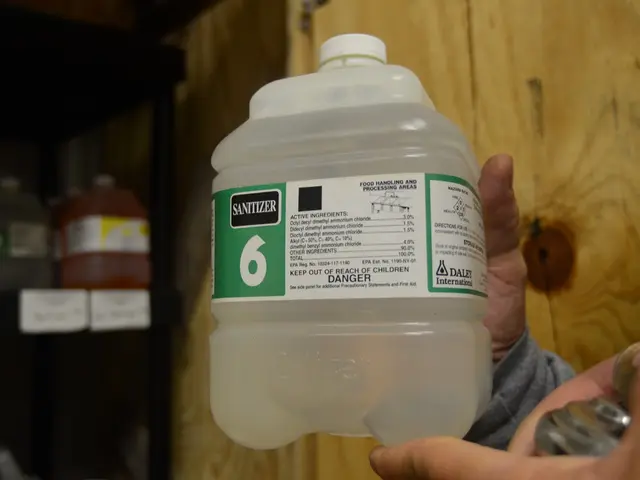Symptoms, Diagnosis, and Medical Interventions for Sheehan Syndrome
Sheehan syndrome is a relatively uncommon condition that affects the pituitary gland, often occurring following childbirth. This condition is characterized by the failure of the pituitary gland to produce necessary hormones, leading to a variety of symptoms.
The primary risk factor for Sheehan syndrome is severe postpartum hemorrhage, which causes significant blood loss and ischemic necrosis of the pituitary gland. This severe blood loss and resulting hypovolemia during or after delivery reduce blood supply to the pituitary, triggering the syndrome.
Symptoms of Sheehan syndrome can develop gradually over time or very soon after childbirth. They may include difficulty or inability to lactate, menstruation changes, decreased sex drive, decreased breast size, thinning of the vaginal lining, fatigue, hair loss, low blood pressure, dry or wrinkling skin, weight gain, constipation, increased insulin sensitivity, and changes in cholesterol levels.
One of the more serious complications of Sheehan's syndrome is the possibility of experiencing an adrenal crisis during times of physical stress. To mitigate this risk, a doctor can help create a plan for adjusting medications to lessen the risk of adrenal crisis.
Preventing and managing postpartum hemorrhage effectively is critical to reduce the risk of Sheehan syndrome. Pregnancy complications such as prolonged labor, uterine rupture, or placental abnormalities may increase the risk of a person's blood pressure dropping, reducing blood flow to the pituitary gland during childbirth.
Treatment for Sheehan syndrome aims to replace the hormones in the body that the pituitary gland cannot adequately produce. This may include corticosteroids, levothyroxine, estrogen and progesterone, and growth hormone.
Diagnosing Sheehan syndrome can be challenging for doctors, as symptoms can emerge gradually and look similar to other conditions. Diagnosis may involve blood tests, an anterior pituitary hormone test, and an MRI to show any damage or changes to the structure of the pituitary gland.
In rare cases, psychosis can be a complication of Sheehan syndrome due to the hormonal imbalances it causes. Damage to the pituitary gland due to Sheehan Syndrome can lead to a reduction in the function of this gland, affecting the production of hormones like luteinizing hormone, prolactin, adrenocorticotropic hormone, and growth hormone.
Sheehan Syndrome is more common in countries with less medical resources, occurring in 5 out of every 100,000 births in these nations. Treating Sheehan syndrome can relieve symptoms and allow a person to live a healthy, typical life.
It's important to note that while Sheehan syndrome is a serious condition, awareness and early detection can lead to effective treatment and management. If you or someone you know has experienced symptoms similar to those described above after childbirth, it's crucial to consult a healthcare professional for a proper diagnosis and treatment plan.
References:
[1] Sheehan D, et al. (1937) Postpartum pituitary necrosis. Lancet. 1: 1079-1083.
[3] Kovacs A, et al. (2013) Sheehan's syndrome: a review of clinical presentation, diagnosis, and treatment. Journal of Obstetrics and Gynaecology Canada. 35(8): 581-587.
[4] Ahmed O, et al. (2015) Sheehan's syndrome: a rare cause of secondary amenorrhea in the United States. Journal of Clinical Endocrinology & Metabolism. 100(11): 4298-4303.
- Despite being a relatively uncommon condition, Sheehan syndrome is more prevalent in countries with lesser medical resources, occurring in 5 out of every 100,000 births there.
- Treatment for Sheehan syndrome, which includes hormone replacement therapy with corticosteroids, levothyroxine, estrogen and progesterone, and growth hormone, can relieve symptoms and allow a person to live a healthy, typical life.
- Early detection and treatment are crucial for managing Sheehan syndrome, as psychosis can be a complication of the condition due to hormonal imbalances it causes.
- To mitigate the risk of adrenal crisis, a possible complication of Sheehan's syndrome during times of physical stress, a doctor can help create a plan for adjusting medications.








